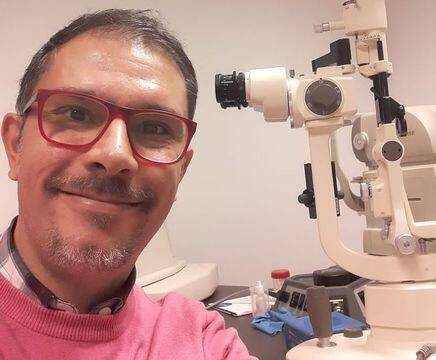
Vision therapy provides solutions to vision problems caused by neurological disorders. Depending on the results previously assessed and tested, it provides a complex treatment taking into account the abnormalities and symptoms.

Vision therapy provides solutions to vision problems caused by neurological disorders. Depending on the results previously assessed and tested, it provides a complex treatment taking into account the abnormalities and symptoms.

In some cases, a more complex vision test than the traditional tests is needed, this is the functional eye test. Comprehensive mapping, which can even be referred to as a special education examination, highlights the links between learning disabilities and vision

I deal with a lot of people who have suffered some kind of brain injury. It could be surgical, traumatic brain injury, brain tumour, or even stroke. My vocation is to make their lives better and easier through neuro-optometric rehabilitation or visual therapy.

OCT – Optical Coherence Tomography – allows us to screen the nerve membrane of the eye, as well as the optic nerve and macula, and their diseases.

A CFF test to check the conduction of the optic nerve can detect several problems. These include optic nerve damage, which in most cases is caused by glaucoma.

The polatest is a special test method that can detect hidden strabismus. Because this problem can indeed remain hidden for a long time.

The pachymetry, i.e. the measurement of the thickness of the cornea, is always quick and completely painless, and is essential in the case of glaucoma. It can provide essential information for the ophthalmologist.

A fundus examination is part of every eye examination. It is used to assess the condition of not only the eyeball, but all its protective organs – the eye muscles, the eye socket and the eyelid.

At Rapidus Ophthalmology, intraocular pressure is measured using a non-contact tonometer. During this completely painless examination, the eyes are not touched by the instrument, so no anaesthetic is needed.

Visual field defects may initially develop in the outer parts (periphery), but may also occur near the centre of the visual field.

Contact lenses are widely used today, mostly to correct vision problems but also for cosmetic purposes However, it definitely makes a difference what kind of lens we use

Regular vision screening, at least once a year, is just as vital as regular health screening.